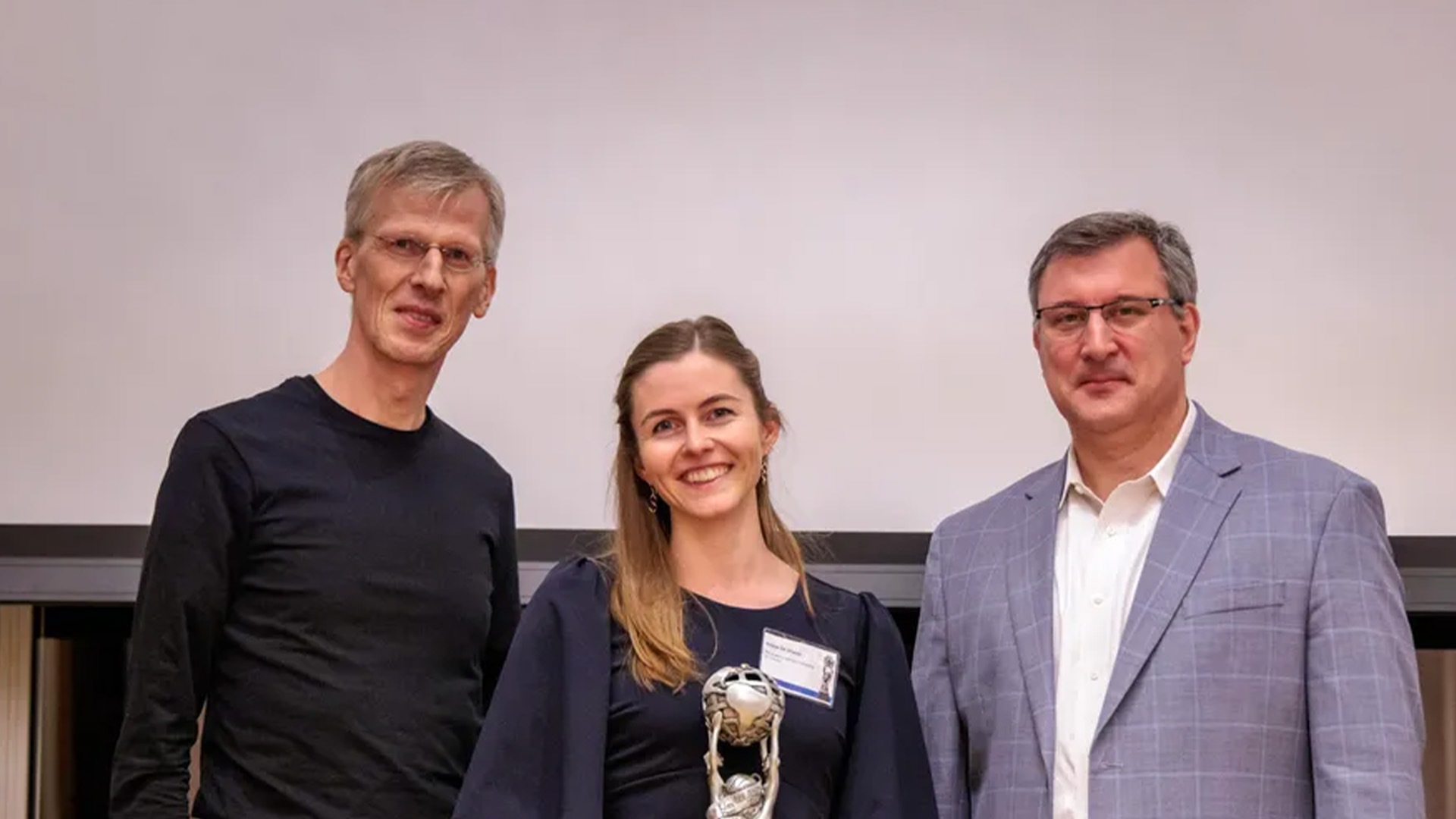Bell Labs Prize winners close the THz gap with inexpensive harmonic sensors

This year’s winners of the 2023 Bell Labs Prize are shining a light into a blind spot for today’s sensing technologies. Referred to as the THz gap, it comprises an area between 0.1 THz and 10 THz where there are no practical sensors available for capturing the information it contains. Ariane De Vroede, Research Assistant and doctoral candidate in Electrical Engineering at KU Leuven in Belgium, and Patrick Reynaert, Professor at KU Leuven, Department of Electrical Engineering, have proposed a unique harmonic solution that may allow us to access the THz gap using compact, low power and inexpensive image sensors.
THz imaging has many interesting applications if a compact and affordable sensor could be produced at scale. One of its key attributes is that it is safer than X-rays, because it doesn’t emit harmful ionizing radiation. Medical imaging demonstrations in dentistry, melanoma diagnostics and surgical margin identification have been promising. It has also been demonstrated to be good at revealing hidden defects in manufacturing. Other possibilities include security scanning at airports and improved sensing for food safety.
A compact, inexpensive and scalable THz sensor would complement other sensor technologies and allow for a complete picture of the electromagnetic field or “sensor fusion”. According to Reynaert, “there’s a lot of interest in the market around THz, which is expected to grow at a compound annual growth rate of almost 33% over this decade.”
Because no oscillators or amplifiers work above 300 GHz (referred to as the fmax) in CMOS, standard electromagnetic receivers cannot be used for THz imaging. As a result, sensitive THz imaging has been the province of expensive, larger format devices that cannot be produced at scale. Some of the pioneering work in THz imaging were done by Bell Labs researchers Binbin Hu and Martin Nuss in the mid-1990s, using pulsed lasers. Other sensitive solutions have been developed since, but all suffer from some combination of being too big, too expensive, too cold or too difficult to fabricate at scale.
The prize-winning work done by De Vroede and Reynaert enables sensitive THz detection using complementary metal–oxide–semiconductors (CMOS) sensors, a technology with its roots in work done by, among others, Martin Atalla and Dawon Kahng at Bell Labs in the late 1950s. Being compact, low power and cheap, CMOS is used for the image sensors in most digital cameras today. If De Vroede and Reynaert’s CMOS sensing technique can be applied at scale, inexpensive and sensitive THz sensors could become available for a wide range of applications.
De Vroede and Reynaert’s key insight is to use non-linear effects in self-oscillating pixels to achieve sensitive harmonic injection locking to signals in the THz gap. As part of her doctoral thesis research, De Vroede first demonstrated this technique using a single CMOS-based self-oscillating pixel in 2020, and they then created a mathematical framework for understanding and optimizing the process. In 2022, they created four-by-four pixel arrays to perform imaging demonstrations and study and diminish the coupling between the pixels. Next steps include optimizing the activation and readout schemes, implementing on-chip calibration, and using AI for signal processing.
A Senior Member of the IEEE, Reynaert’s doctoral work was on CMOS RF amplifiers and his post-doctoral work, on mm-wave CMOS integrated circuits. He has been focused for two decades on line drivers and power amplifiers in a variety of integrated circuits, including CMOS, as well as working on THz communication and sensing solutions.
On working with Bell Labs researchers Shahriar Shahramian, Yves Baeyens and Mustafa Sayginer over the course of the Bell Labs Prize selection process, De Vroede emphasized how their expertise and experience “expanded her perspective” on her doctoral work and made her “even more enthusiastic about its potential”.
That enthusiasm was shared by the panel of experts and industry leaders who rewarded De Vroede and Reynaert with the Bell Labs Prize 2023 and $100,000 for their innovative work. They will also be able to continue to collaborate with their Bell Labs team of researchers to further develop their innovation.
The 10th edition of the Bell Labs Prize attracted entries from 107 research teams in 25 countries. Second prize was awarded to Cynthia Rudin, Professor of Computer Science at Duke University, Margo Seltzer, Professor of Computer Science at The University of British Columbia, Chudi Zhong, Ph.D. student in Computer Science at Duke University, and Jiachang Liu, Ph.D. student in Computer Science at Duke University for their work on how to make AI more trustworthy. They developed interpretable machine learning algorithms for non-deterministic problems that achieve accuracy comparable to traditional black-box deep-neural networks. By opening the black box of AI, they hope to enable users to easily choose the best model for the task based on their domain expertise.
Third prize went to Kerem Çamsarı, Assistant Professor in the Department of Electrical and Computer Engineering at UC Santa Barbara, and Navid Anjum Aadit, Ph.D. student in Electrical and Computer Engineering at UC Santa Barbara, for their work in probabilistic computing. They demonstrated the possibility of probabilistic computation using p-bits as an abstraction between bits and quantum bits (qubits). This physics-to-systems co-design approach avoids the use of random number generators in favor of stochastic nanodevices harnessing physical noise. Their work suggests that using these magnetic tunnel junctions could unlock orders of magnitude further improvements over existing classical or quantum computation.
For information, visit the Bell Labs Prize page.
Written by Richard Hamilton
